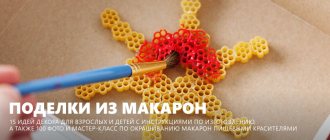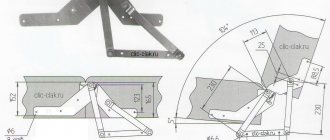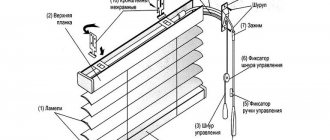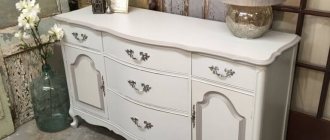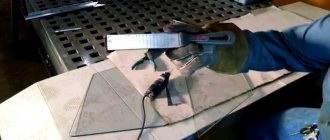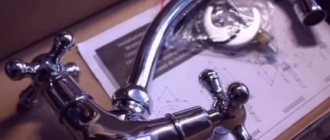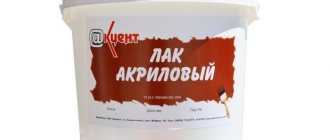59363
Leather upholstery for furniture is considered one of the best materials. It combines strength and presentable appearance. But during use, stains and scratches will still appear. It is possible to carry out minor repairs to leather furniture on your own, although much depends on the nature of the damage. If the contamination or defect is not eliminated in time, the furniture will lose the value and richness of the color of the upholstery. With scratches and cracks, the situation is even worse - if repairs are not started in time, the crack can grow to such a size that it will be easier to buy a new sofa.
How to fix a gap with your own hands
It is believed that leather is a fairly durable material, but it can also tear. Although, of course, holes appear less often on such products than on fabric and canvas ones. If this has already happened, then the instructions for bringing the jacket into proper shape depend mainly on the form of damage that has occurred. There are situations when the material is torn by a “corner”, and there are situations when a piece of skin flies off completely.
In the first case, the sequence of actions is as follows:
- Provide access to the tear from the inside of the leather jacket. It is necessary to rip the jacket lining along one of the seams.
- Carefully, as far as possible, smooth out the torn corner. Now you need to fit it back and secure it with tape on the front side.
- We glue a patch made of leather, thick fabric or suede from the inside. We make sure that the overlay is larger than the tear site and protrudes beyond each of its edges by 10-15 mm.
- Having smoothed the surface from the inside, we install something heavy on the front side. Leave the load until the patch is completely dry.
- We remove the tape. Apply a thin layer of glue along the entire joint of the gap from the outside (it is convenient to use the tip of a toothpick for this).
- We mask the damaged area with a special leather paint to match the product or a regular cream.
- Sew up the inner lining.
Important: Please note that the tape you take is initially very sticky. It may leave marks on the surface of the jacket. It's better to "weaken" it. To do this, glue it to the surface of your leg, peel it off, and then use it for its intended purpose.
In a situation where the hole in the jacket is obvious and a piece of material is completely torn out, repairing the product is somewhat different.
- We rip the lining from the inside in order to get to the place where the skin is torn.
- We level the damaged area as much as possible, glue a patch from the inside, and place a weight on it.
- After the glue has completely dried, we repair the front part of the product. If the “original” torn piece is lost, you need to cut another one from a flap of leather, which is as similar in characteristics as possible to the material of the jacket. We make sure that it is identical to the shape of the hole. We put this piece into the hole.
- Carefully fill the resulting joint with glue along the entire perimeter of the outer patch.
- After everything has dried, paint over the damaged area. Sew up the ripped lining.
If the gap is large and is in plain sight, then repairing it with your own hands will be quite problematic. It is better to contact qualified craftsmen for help in the studio. If an area of skin needs to be replaced, specialists will be able to select the most suitable flap and carefully stitch it in the right place.
Tip: Alternatively, you can seal the jacket yourself and add leather patches. Particular attention should be paid to masking the damage. For example, you can install additional decor in this place. This approach will not only hide traces of the tear, but will also give the jacket originality.
How to avoid damaging a genuine leather jacket during repairs
There are several ways to repair a leatherette product. Aerosol paints and shoe polishes help disguise shallow scratches and minor abrasions.
When starting to renew the material, prepare fabric paint in cans, warm water, a foam sponge, dishwashing detergent and orange peel.
The leather jacket is usually fastened with a zipper or buttons. Modern products are made of soft natural or artificial leather with or without insulated lining. The skin of different animals is used for sewing - buffalo, pigs, cows, sheep, horses, goats, etc.
Buffalo leather is very durable and elastic, so jackets made from it can be worn for years without any problems.
Pigskin is the cheapest because it has poor technical characteristics. It is porous and inelastic, so even new jackets often develop defects.
The most problematic areas of leather jackets:
- collar;
- sleeves;
- cuffs;
- pocket area;
- shoulder and side seams.
If your leather jacket is torn, repairs should begin immediately. When a gap or cut forms along a seam, the hole quickly increases in size. This especially applies to places where the skin stretches the most - the area of pockets, elbows, chest.
How to mend a gap
Tearing of the material at an angle is a problem that owners of leather jackets often encounter. If you get caught on a sharp metal object, defects will certainly appear on your skin:
- break in the shape of an angle;
- a hole due to a completely torn flap of skin.
The methods for repairing a jacket in both cases are radically different. When the skin is torn at an angle, restoration is less labor-intensive and takes little time.
How to sew a leather jacket when the material is torn at an angle:
- the jacket is turned inside out;
- in the area of the defect, the lining is ripped out along the seam;
- from the inside, the area of the rupture is degreased with alcohol;
- cut out a patch from a piece of fabric or leather so that it overlaps the edge of the tear by at least 1 cm;
- the patch is smeared with glue and applied to the area of the tear, having previously joined the edges of the torn material;
- a load is placed on top (a stack of books, a heavy iron, a decanter) and left for half an hour;
- If the patch has stuck well, the lining is sewn up.
To close the gap and not redo the work, you can’t rush. If you apply too much glue, smudges appear on the front of the jacket. Sometimes the edges of the torn flap diverge, causing the defect to become noticeable. To fix the problem you need to:
- bend the skin at the site of the tear;
- Using a toothpick, coat the edges with glue;
- place the jacket on a flat surface;
- move the edges of the tear by pressing them with your fingers;
- place the weight on top for 15-20 minutes.
To better camouflage the repaired area, it is treated with cream paint. If the jacket is winter, you can go outside in it only a day after restoration.
When a piece of skin is torn out, it is more difficult to deal with the hole. To revive the jacket, a double patch is made - from the inside and from the front side.
How to repair a leather jacket if the hole is not along the seam:
- the leather jacket is turned inside out, and the lining in the place of the hole is ripped open;
- the inside of the skin is degreased with alcohol;
- glue is applied to the patch and applied to the hole;
- place a load on top for 30-40 minutes;
- on the front side, glue a torn flap or a piece of skin as similar as possible to it, corresponding to the shape of the hole;
- the joint between the base material and the patch is carefully filled with glue;
- Once dry, cream is applied to the repaired area and the lining is sutured.
We suggest you familiarize yourself with Liquid washing gel where to pour
If a piece of leather is torn out in a visible place, the damaged area can be decorated with leather stripes or chevrons. In extreme cases, the patch is masked with a decorative seam.
If there is a cut, you can repair a leather jacket with your own hands using glue and a patch, tape, plaster or adhesive-based tape. If a hole appears on a sleeve or chest, it is recommended to use patches or keeper tape, as they are highly durable.
How to fix a hole in a leather jacket:
- in the area of the cut, the lining is peeled off;
- a rectangular patch is cut out of leather or thick fabric;
- the reverse side of the cut is degreased with gasoline or acetone;
- Moment glue is applied to the cut;
- a thin layer of glue is also applied to the cut-out patch;
- the scrap is glued to the cut so that it overlaps the edges by 1 cm;
- pressed down with a load from above;
- a day later, the results of the work are evaluated.
To disguise cuts, craftsmen use liquid leather - a means for repairing leather products, which in consistency does not differ from shoe glue. After polymerization, it turns into an elastic material. For the restoration of leather bags and jackets, the following is used:
- Guin – eliminates cuts, deep scratches, burns on the skin. The manufacturer produces adhesives in different colors - red, green, black, white, yellow, etc.
- Premium – restores burnt areas, cracks, abrasions and cuts. Professional glue has waterproof and frost-resistant properties.
- Kolorstar - masks deep scratches, small holes, abrasions and faded areas of leather. After drying, the glue becomes flexible and elastic, which prevents the glued edges of the product from coming apart.
To seal cuts with liquid leather you will need:
- bandage or piece of gauze;
- plastic card (bank, discount);
- tube of liquid skin.
Features of repair using liquid leather:
- a piece is cut out of gauze to cover the cut on the jacket;
- liquid skin is applied to the defect on the front side;
- a piece of gauze is placed on top, the edges of which are stretched;
- after 10 minutes, another layer of liquid skin is applied to the gauze;
- After 3 hours the glue dries completely.
Gauze or bandage plays the role of a reinforcing layer that prevents the edges of the cut from re-diverging. If desired, it is made from the wrong side, but glued with rubber glue. And from the face, a thin layer of liquid skin is applied to the cut only once.
A torn “wound” is the worst thing that can happen to a leather jacket. But if desired, it can be restored using leather or a patch.
Fixing a hole in a jacket:
- the product is turned inside out and the lining is ripped open in the area of the defect;
- use scissors to straighten the edges of the hole so that it takes on an oval or round shape;
- a patch is cut out of a piece of leather to the size of the hole in the jacket;
- on the reverse side the material is degreased;
- a patch is made from fabric;
- a piece of fabric is coated with glue and applied to the hole;
- leave the jacket under the load for 2 hours;
- a leather patch is inserted on the front side;
- glue is carefully poured along the edge;
- press down with a weight and leave for at least 12 hours;
- the lining is sewn together, and the problem area is lubricated with cream.
The edges of the patch should overlap the hole by 1-2 cm. Otherwise, after a couple of months the product will have to be restored again.
Cuffs and collar are the most problematic areas of a leather jacket. Due to constant friction, abrasions appear on them, and sometimes the skin cracks. If there are pieces of material that match the color, it is better to replace the worn parts. If this is not possible, restoration will have to be resorted to.
Leather jacket repair:
- Greasy and worn. The collar is treated with gasoline and then allowed to dry. Apply paint with a sponge to remove scuff marks.
- Cracked skin. Peeling sections of material are cut off with scissors. The problem area is degreased with alcohol. Apply a thin layer of liquid skin. After 3-4 hours, another layer of glue is applied. You need to make sure that the liquid skin does not extend beyond the edges of the crack. To prevent sagging, remove excess product with a dry cloth.
We suggest you read: If a colored item has faded, what to do?
Failure to comply with the repair technique causes new defects. To avoid them, you should:
- use only special adhesives;
- degrease the area being repaired;
- Make patches only from leather or thick textiles.
During repairs, it is strictly not recommended to use a hair dryer, hot iron or lighter. By trying to speed up the cure of the glue, you are more likely to burn the fabric.
Repairing leather jackets is a labor-intensive process that cannot be rushed. If you want to give things a second life, take the procedure responsibly. Those who are not confident in their own abilities should turn to professionals in the studio.
How to sew up holes and cuts
In order to stitch the product, you will need a sewing machine, a special strong needle, a prepared leather patch and threads of a matching color. This largely determines how carefully you can deal with eliminating defects on a jacket at home.
Restoration of leather canvas consists of several steps:
- We get to the place of the tear from the inside of the jacket (to do this we rip the lining).
- We trim the edges of the hole, making them as even and smooth as possible. We prepare a fabric patch, which we apply in this place. We take into account that the flap should protrude beyond the edges of the “wound” by 1.5-2 cm.
- A piece of skin, which is slightly larger in size than the damaged area, is applied externally. Make sure that both patches are positioned evenly in relation to the hole.
- Using a sewing machine, attach the patches.
Important: make sure that the needle is strong enough and suitable for working with leather. Otherwise, you can not only ruin the jacket, but also damage the sewing machine.
- How to restore facial skin elasticity
How to use liquid skin correctly
In order to eliminate scuffs on a leather product, you need to apply a liquid to the surface. This must be done carefully and slowly, making sure that the layer is even and not too thick. It is better to do this in several stages.
Gently apply liquid leather to furniture.
Initially, apply the first thin layer, wait for it to dry completely and then see if it is enough, or if you need to repeat the procedure. After the layer has been applied to the surface, you need to take a sponge and walk over the area and apply a little pressure. Such manipulations will help give the repaired area the relief that is inherent in natural fabric.
If you stain a leather sofa with something greasy, you can cover the stains with talcum powder for two hours.
In order to level the area, it is best to use a dry sponge. After this, you can let the product rest and at the same time dry the treated area. After complete drying occurs, it will be clear whether the procedure needs to be repeated or not.
Scuffs and small scratches on leather upholstery can simply be painted over.
If a sofa or other piece of furniture is damaged due to paresis, then liquid leather is applied as follows. Initially, the two edges of the cut are pulled together as tightly as possible and liquid is applied to the separation site. After it hardens, reapply the product and do the same procedures with the sponge as with normal rubbing.
Liquid skin is easier to apply with a sponge.
How to fix a collar
If this section of the fabric is torn, then the damage can be repaired using any of the previously described methods.
Owners of leather jackets note that one of the most common problems they encounter is the appearance of greasy marks on the collar. This happens if the product is worn for a long time and is not cleaned in a timely manner. There is a way to deal with this problem:
- We treat areas of the skin that have lost their attractive appearance with gasoline. Let the material dry and check the result. If necessary, repeat this manipulation several times.
- After removing all traces of fat, a special paint will allow you to restore the original color of the skin. Using a sponge, carefully paint the collar. Make sure that the product spreads evenly over the entire treated area.
Remember that at home there is always a risk of damaging the product due to careless actions. To prevent this, test the described method in an inconspicuous place. And only then boldly get to work restoring the proper appearance of the collar.
The question remains: if the leather on the jacket is cracked in this area, what should I do? To eliminate such defects, it is advisable to use special dyes that match the color. However, it is better not to use those that come in the form of sprays. Such products are usually sprayed from a distance of 30-40 cm, due to which the dye goes beyond the collar and falls on a larger area.
LiveInternetLiveInternet
Many people love leather clothes. This material is quite durable and wear-resistant. You can wear it for years until you get tired of it. However, very thin, soft leather is sometimes used for clothing. But it is no longer so durable and it can develop tears, scratches and other damage. How to restore skin so that the damage is least noticeable?
There are different ways. The most popular is the method with a patch from the wrong side. Yes, it is the most reliable and durable, but it can be done in different ways. Depending on the materials used, which include the patch material, glue and, in fact, the application method itself. You can make a patch of leather from the inside out (as is done in many workshops) and get an “oak” restored area. Which will be durable, but will immediately catch the eye and differ in its texture. Or you can make a neat patch from fabric, which will be no less durable, but less noticeable. And most importantly, the restored area will remain soft and flexible.
I’ll show you my method of restoring tears in leather clothes, which I really love. The result is always pleasing. It is great for all types of natural leather, including colored leather. But not suitable for leatherette.
I recommend finishing the treatment with a special restorative cream, which in everyday life is called “liquid skin”. Then, if the area was not badly damaged and is located in an easily accessible place, a completely invisible restoration can be done. It's completely invisible. I tried different types of “liquid skin”. There are very good creams, there are so-so creams, and there are very good ones. Of all, I highlight SAPHIR (France). The quality is excellent and there are different colors. You can find where to buy them on the Internet. It's not a problem. I saw it quite recently at the Crafts Fair. In my example, the restoration will be in a hard-to-reach place. The tear is right next to the pocket frame. And the second tear was on the sleeve, below, right on the fold, and even under the sleeve, which also complicated the task. And the gap itself was “terry”. Therefore, the result was not completely ideal. But, nevertheless, it turned out quite worthy and can now be worn. In addition to restoring the tear, I’ll briefly tell you how you can update a leather jacket, refresh the lining in it, and your favorite thing will still serve for a year or two.
Every family has genuine leather products. These are jackets, raincoats, bags, shoes, accessories, as well as skirts, dresses and leather trousers. And even furniture! How can you restore cuts and scratches on leather products at home?
Genuine leather, like any other material from which clothing can be made, is susceptible to damage. And most often these are rips and scratches.
It is not always possible to restore a tear without a noticeable mark. But getting rid of scratches (and even deep ones!) without a trace is quite possible.
Such restoration can be performed using “liquid skin”. I’ll say right away that out of the entire range of liquid leathers, only one type allows you to do this job efficiently. Since this is a polymer material, of course, only a really, really high-quality product can “adjust” the sweat texture of natural leather.
Of all the tried and tested liquid leathers, only Saphir liquid leather made in France is such a product. Its correct name is Creme RENOVATRICE Skin Restorer. Available in 25 ml tubes. Has a wide range of colors.
The professional product Saphir (Safir) is indispensable for restoring the damaged facial layer of all types of smooth leather.
It is used to treat only damaged areas of the skin; in case of severe damage, it is recommended to apply 2-3 layers. The special composition forms a durable and elastic layer on the damaged skin surface that imitates skin. Eliminates abrasions, deep scratches, chips, knocked toes of shoes, traces of tears after gluing, restores the color of damaged areas of the skin. It is used for any products only made of smooth leather, and only for damaged areas.
On a note! If you were unable to choose a shade from the available range, then by mixing several colors you can achieve the desired shade. For a more detailed color selection, it is recommended to check the color on a small area of the product and wait for the cream to dry.
In large cities, I think it’s not a problem to find such a tool. Ask large shoe repair shops; they are usually in the know and have this type of liquid leather on sale. By the way, in Russia for some reason they call it “Sapphire” (even the sellers themselves), although it is spelled “Safir” .
ATTENTION! When working with this type of liquid leather, you need to wear plastic gloves. Not in rubber!!! Only in polyethylene!
When working, you will have to press the cream with your fingers and it will not stick to plastic gloves.
These gloves are used by hairdressers when coloring hair. You can purchase plastic gloves in specialized stores and departments for hairdressers and beauty salons. They are in every city.
Source: armaliniblog.ru
ALL IN OUR HANDS !!!
Your LYUBASHA BODIA
Repair using liquid leather
Today, the market offers a wide range of products that greatly facilitate the repair process. Particular attention should be paid to such a product as liquid skin. It allows you to quickly and easily eliminate various types of damage to the main fabric, pockets, collar and cuffs.
Important: before working with this product, the damaged area must be cleaned of dirt, degreased and thoroughly dried. Otherwise, the actions taken to restore the product may be ineffective.
By choosing liquid leather to match the jacket, you can cope with both deep scratches and through cuts. The only difference in repair is that in the second case, you will need to glue a piece of fabric or leather from the inside that completely covers the cut. The rest is simple:
- Apply the product in 1-2 layers (depending on the depth of the damage) to the edges of the scratch. Make sure that liquid skin does not fall outside the cut. If this happens, remove the excess with a dry sponge.
- Before the mixture begins to dry out, blot the damaged area with a clean cloth. This will somewhat eliminate differences in the surface textures of the jacket and the applied product.
Carefully follow the instructions for use of liquid leather and repair outerwear at home without resorting to the services of professionals.
- How to restore the lipid barrier?
Composition of the “Liquid Skin” product
Industrially, liquid leather compositions are made from alcohol, water and polymer dyes. The applied mixture is absorbed, filling the damaged area of the leather product, after which it must air dry. The solution is not a glue, but only a coloring agent.
You might be interested in what fabrics are used to create outdoor curtains
Note! Some mixtures may contain an adhesive base and rubber resin, which form an elastic consistency. Making a similar liquid yourself is possible using acrylic artistic paints.
Scuff Repair
How to repair a leatherette jacket
Faux leather is a rather difficult material to repair. Therefore, if damage is detected, it is better to transfer the item to specialists for restoration. They will be able to eliminate defects, successfully disguise the repair site, and even replace a section of eco-leather if necessary.
Of course, it is not always possible to take the product to a workshop and you have to think about repairs yourself. Find out which repair products are appropriate to use in each specific situation. So, if a leatherette jacket is cracked, what to do is always a pressing question.
When the scratches are shallow and small, a good solution to the problem would be to use an aerosol bottle with a dye. The main thing is to choose a tone identical to the product. And then, following the instructions on the bottle, it will not be at all difficult to give the jacket a fresh look and disguise the damaged area.
Important: spray it from a safe distance (at least 30 cm) and apply it in a thin layer. This will help prevent the formation of drips on the canvas.
For more noticeable scratches, it is better to use dyes that penetrate deeper into the artificial material. Similar substances with pigments are applied to the jacket with a soft sponge or a special brush and distributed evenly over the surface. After 30-40 minutes, the paint layer dries, and the jacket regains its attractive appearance.
If punctures or deep cuts form on the canvas, you can deal with them yourself by using liquid leather. The instructions for its use in this case are similar to those described above for the restoration of leather products.
Materials and tools
If a small dirty spot appears on the skin, then a napkin and alcohol are enough to restore the aesthetic appearance. In case of serious mechanical defects, the list of required materials and tools expands. It is determined by the choice of repair method. To eliminate minor damage in the form of small scratches and cracks, you need to prepare an express furniture repair kit: paint, liquid leather, glue, patches made of similar material, threads, needles, scissors, tweezers, spatula. When carrying out large-scale restoration work, a complete repair kit is required. It is needed for assembling and disassembling furniture and sewing seams. The list includes:
- screwdrivers;
- spanners;
- screwdriver;
- pliers;
- stapler;
- anti-stapler;
- sewing machine.
Features, means and methods for restoring different types of furniture
When the repair plan includes replacing the upholstery, the required amount of new material is prepared for the work. If the filling has become compacted or damaged during use of upholstered furniture, foam rubber must be prepared for restoration. Its quantity is determined by the scale of the defect. To restore the protective layer, you will need a restoration mask, a sanding sponge, and soft cloth wipes.
How to restore a peeling jacket
As a result of excessively long use or after unsuccessful washing using aggressive powders, a leather jacket may begin to peel. If the damaged areas are small and not in the most visible places, special dyes can be used to disguise them. By being able to choose the most suitable color, you can hide the defects that appear and extend the life of the leather product.
Tip: It's best to avoid washing your jacket at home. Regular dry cleaning carefully removes various contaminants, maintaining the presentable appearance of the leather product.
Using the above tips and recommendations, you can ensure quality care for your outerwear. If your leather jacket is frayed or cracked, you now know what to do. The main thing is to notice the defect in time, react and apply the right remedy.
- How to tighten your face shape at home: 5 effective ways
Did you like the article? Save it to your Pinterest! Hover over the image and click “Save.”
Repair and restoration methods
For leather furniture, stains are not as critical as physical defects such as cuts or scratches. There are several main methods for restoring such furniture, aimed at both full or partial restoration of the material and hiding defects. The upholstery will not look the same as before, but the scratches will be invisible. The following repair methods can be noted:
- The easiest way is to repair leather furniture using a product called “Liquid Leather” or its equivalent;
- The scratch is painted over with varnish or paint matched to the color of the upholstery. Here we are talking only about camouflage;
- An applique is applied to the damaged area or a patch is sewn on if this does not affect the appearance of the product;
- The most difficult and time-consuming process is the complete re-upholstery of the material. You should resort to it only when repairs with liquid leather no longer help;
- Replacement of accessories. In some situations, it is not the upholstery itself that needs repair, but decorative elements or fittings.
Liquid skin
If you have to work with major damage, you will need to fill the void with foam rubber or cotton wool. This area is glued from the inside of the upholstery. Using the table supplied with the liquid leather, you should select the most suitable color.
The damaged surface is cleaned, degreased, after which the leather furniture is repaired with your own hands. There are no special rules for applying “Liquid Skin” to the surface. The liquid can be applied either with a brush or with a spatula. There is a trick that allows you to give the area restored using the specified product the texture of the original material - you need to attach a sample from the sofa to the damaged area.
Choosing the right shade
Clean the coating and apply the composition
Result
Painting
Painting helps in situations where, after a long period of use, furniture has lost its appearance due to wear and tear. In this case, minor cosmetic repairs should be carried out by painting. The paint itself can be produced both in the form of an aerosol and in the form of a spray, so it will be easy to repair leather furniture. First you need to evaluate how well the paint matches the color of the upholstery, and, if necessary, mix several shades to obtain the desired color.
The damaged surface is first cleaned of dirt and then degreased with acetone. It is better to use sprays, they are more convenient to use. The paint should be applied in several layers. It is important that the previous coat of paint is dry before the next coat is applied. To make the paint dry faster, you can use a regular hairdryer.
Choosing paint
Treat with acetone
Applying the composition
Painting is finished
Padding
The list of items that should be included in the repair kit is described above. First, the sofa is inspected, after which the old upholstery is dismantled. The side and back parts of the sofa, as well as the seat, can be removed using a hexagon or wrench. The staples holding the upholstery are removed with a special tool. It is better to remove the old filler, even if it is in good condition, for a while to assess the condition of the frame. If this is necessary, the filler is replaced with new foam rubber, and damaged parts of the frame are also changed.
The pattern for the new upholstery should be made with a margin of 10 cm, while focusing on the old upholstery. After all the parts are cut out, you can start sewing. If you lack the necessary skills, this process can be entrusted to a specialist.
The constriction looks like this:
- The cut out element is placed on the upholstery of the sofa. The material must be placed in the center of the furniture;
- The fabric is wrapped around the edges, and at the same time tension in the material occurs;
- The upholstery is secured using staples, which should be located at least 4 cm apart from each other.
You need to start working from the middle and move towards the edges. This will ensure even tension.
Patches
Stripes can solve the problem of scratches. The essence of the method is to cut and paste a piece of skin larger than the scratch itself. The patch must be round, although other shapes are allowed. The cut out patch is glued to the bottom of the crack. As for the glue, it must be water-based. It is very difficult to choose a patch that will not differ greatly from the main material, but even if you manage to find such material, the difference will be visible. In this situation, it is worth using additional paint. The repair is complete when the dye is dry.
Treating the surface
Seal the hole
Making a patch
Glue the patch
Overlays
You can repair leather furniture at home using overlays or appliqués. This method can be called unusual, because it radically changes the appearance of the furniture. An overlay differs from a patch in that it is placed on top of the upholstery. The overlay serves to prevent further crack growth. Accordingly, the owner of the furniture realizes that the sofa or chair will no longer have its original appearance. But this can be avoided with a little imagination. Using contrasting overlays, you can create an unusual pattern - it can be an abstract drawing or a specific image. It is better to place the pad itself on glue or sew it with thread.
Threads and needles should not be used because they leave marks, which eliminates the possibility of moving the lining to another place without consequences. Using glue leaves room for error. As with conventional crack sealing, the desired area should be degreased before installing the overlay.
Wipe the coating
Seal
There is a type of adhesive designed for working with leather. You need to look for a product called universal leather glue. The specificity of the process lies in its effectiveness only for small cuts and cracks. Restoring leather furniture requires careful application of glue. You can apply the glue with a toothpick, match or similar sized stick. After applying the glue, press the edges of the scratch firmly. These edges can also be tied together with synthetic thread. All excess glue must be removed. It is not always possible to carry out this procedure unnoticed, that is, the place of gluing will still be visible. Then the damaged area of the material should be polished and painted.
Choosing a special glue
Filling the cracks
Removing remaining glue
Replacement of accessories
Furniture supports, ties, wooden armrests, decor - all these elements can also break due to chemical or physical influences. Repairing these components is, in most cases, impractical. It’s easier to immediately replace them with new ones.
How to restore leatherette?
Content:
Artificial leather is used for the production of haberdashery goods, clothing, shoes, furniture upholstery, and car seat covers. The finished coating is obtained by applying a textured polyurethane film to a cotton base. This film is safe for human health and allows air to pass through well. Things and furniture made from eco-leather are wear-resistant to abrasion, scratches and other damage. Any product becomes unusable over time, so in order not to complicate the situation even further, it is necessary to take timely measures. Today we will tell you how to restore leatherette with your own hands. You will be presented with several simple options for solving this problem.
What to do if your eco-leather jacket is cracked?
Has your favorite jacket lost its former shine, and has scuffs, creases and other damage appeared on the surface? How to restore a leather jacket - let's take a closer look at your next steps:
- Assess the extent of damage. This must be done first of all so that you understand what kind of repair the product needs and how much time it will take. First of all, you need to inspect the jacket; if there is severe damage on its surface, then to restore it you need to use deep dyeing products, and the repair process itself will be painstaking and long.
Important! Small scratches on artificial leather should be removed immediately after they are identified. This must be done to further preserve the item and protect it from more serious damage to the material.
- Do the repairs yourself. It is advisable to do such actions only in case of minor defects on eco-leather. If you decide to restore severely damaged leatherette on your own, then you risk damaging the product.
- Use the services of qualified specialists. The best way out of this situation is to contact a professional. This is due to the fact that working with natural and artificial materials requires special care, skills and adherence to restoration technologies.
DIY “Liquid Skin”
If the required shade of the paint composition is not available, it is possible to prepare the “Liquid Skin” product yourself.
For production you will need:
- acetone solvent;
- regular pipette;
- a piece of leather of similar quality and texture;
- knife and small spatula.
The liquid type of material can be easily prepared with your own hands from the same material that needs to be restored. Acetone dissolves the material in the selected area. The scraped off particles are transferred to scratches or worn areas and rubbed into the surface of the product with a spatula. The area cleared of excess particles is dried and painted with a color-matched composition.
Bag with full surface restoration
What and how to restore leatherette?
So, we come to the most important question: what are the ways to restore artificial leather? The upholstery on the sofa is exposed to mechanical stress almost constantly, especially if there are small children in the house. You don’t always want to get rid of a cozy leather sofa if it has cracks and damage, outerwear or even small accessories. There are several options to get rid of this problem.
Orange peel
This affordable component can give gloves, a wallet, a business card holder and other small accessories their former shine. Please note that with this option it is impossible to remove scuffs and cracks on eco-leather, but you can only update the coating. It is advisable to carry out this procedure periodically in order to protect the material.
Dishwashing liquid
If a greasy stain appears on your jacket or sofa and you don’t know how to remove it, then regular dishwashing detergent will come to the rescue. It must be applied to a sponge and wipe the contaminated area.
Important! When using this method, you should not rub the surface too hard to avoid damaging it further.
Gasoline or turpentine
With this method you can easily and quickly remove even the most stubborn stains. Alcohol can penetrate deep into eco-leather, which will visually mask all the flaws of the damaged surface. To apply alcohol or turpentine, you need to use a small piece of gauze to apply the product to the damaged material for 15 minutes. After complete drying, the skin will become one solid piece, and defects will be almost invisible. If the skin on your product has peeled off in the cold, it can be restored following the rules.
Important! The most important thing here is to adhere to one rule: do not leave a strong substance on the leatherette for a long time, as it can wash off the paint applied during the production of the product.
Special dyes for artificial and natural leather
This is an excellent solution for getting rid of weak and strong defects in the surface of leatherette. The coloring pigment penetrates deeply into the structure of the material, which allows you to completely eliminate the defect and give the product an attractive appearance.
The most important advantage of this method is the rich palette of colors and shades - from standard leather options to acidic ones. Such dyes make it easy and simple to process and smooth the surface.
Important! To consolidate the result, we recommend covering the paint with a finishing layer using leather varnish.
Aerosols
They are similar to paints, but are used to remove minor scratches and level the surface. Aerosols must be applied in a thin layer, as a thick layer can cause smudges and cracking, which will only worsen the situation.
Liquid skin
Using this product you can achieve an ideal “skin” relief on the surface of the coating. “Liquid leather” is used to fill scratches, cuts and small punctures. Before using this substance, be sure to read the instructions for use.
Partial replacement of material
This method is used only in case of severe damage to the material - deep cuts and lack of coating on the product. Only specialists with knowledge of special technologies for restoring artificial leather can restore eco-leather with numerous defects. In case of such damage, it is advisable to have the furniture reupholstered, since partial repairs cannot restore the product to its original appearance.
How to use liquid skin
Dried paint does not cause any harm to humans, but some precautions exist:
- It is preferable to work with medical gloves;
- protect your eyes from contact with the product;
- do not allow the undried product to touch any skin;
- the product is poisonous and dangerous;
- keep jars with the composition in a place inaccessible to children and animals;
- if the product gets on the body, rinse the affected area thoroughly under running water;
- should be used with caution for artificial fabrics imitating leather.
You might be interested in Which fabrics are best to choose for roller blinds and light curtains
There is no need for special skills or experience to paint damaged areas of the product. The degreased surface is simply painted and dried well.
If it is not possible to select a material to seal a cut or scratch, then use an inconspicuous part of the product. Apply a few drops of acetone to the lapel of a jacket or boot to dissolve the leather. Quickly scrape off the material and apply it in the required place, rubbing it in with a spatula. The dried surface is polished with a soft cloth, then the desired color is applied.
Note! The painted surface acquires the qualities of a leather product after complete drying. The manufacturer indicates in the instructions how to use liquid leather correctly.
Repair using adhesive
How to restore leatherette on a sofa?
Many people like leather furniture. A leather sofa looks beautiful and expensive, but it costs a lot of money and requires special careful care. The optimal solution for natural material has become eco-leather, which in appearance is practically no different from an expensive coating, and according to some criteria even surpasses it.
Steps for restoring a faux leather sofa with your own hands:
- Level the surface, remove all protruding threads and fibers.
- Carefully sew the edges of cuts and holes or glue them from the inside.
- We wipe the leatherette with dishwashing detergent and then dry it well.
- We select the desired shade by combining several colors.
- We apply “liquid skin” using an art brush or foam rubber.
- We leave the repaired furniture to dry for a day.
Attention! You can level the layers or remove smudges only with a student’s ruler or a plastic card.
An ordinary napkin, on which “liquid skin” should be applied, will help restore the relief. Below are step-by-step instructions for giving the surface a natural structure:
- We take a table napkin in our hands, apply it to an intact leather covering (you can take a piece of an old jacket or gloves, and then dry it for several hours. This blank will serve as a template for us to create an imitation of natural irregularities.
- We apply a napkin to the already painted areas of the product. This is how we got a beautiful and relief print that hid all the existing defects.
A leather jacket is torn: how to seal it with Moment glue?
It often happens that a piece of a jacket is torn out and a hole appears. But don't worry, everything can be fixed. Before you begin repairing a leather jacket, you need to prepare materials and tools. You will need:
- glue "Moment" for shoes. Rubber is better, it is more elastic (all others harden when dry);
- a piece of leather or suede, you can take from an old glove;
- scissors;
- brush;
- toothpicks;
- solvent to degrease the surface to be glued;
- leather paint;
- heavy object or hammer.
Step-by-step instruction:
- You must first glue the patch on the inside of the jacket, providing access to the torn area from the wrong side.
- It is advisable to find a place in the lining where you can slightly rip the fabric and get to the hole.
- Take an old glove, cut a piece out of it and glue it on the inside of the hole, then press it firmly with a heavy object. The flap can be any color, as it will not be visible.
- After the patch has dried from the inside, you will need to work on the front part. Here, it is advisable to match the leather to the color of the jacket, but you can also take a completely different color if you have leather dye available. The flap must be precisely matched to the shape of the hole, the edges must meet completely. To make them match for better alignment, you need to add a little more glue and tighten the edges.
- After everything is glued, you will need to paint over the flap, this will make it less noticeable. This is done carefully using leather paint.
- The last step is to sew up the lining.
General recommendations:
- The most important thing in restoring leatherette is restoring the original pattern. For example, it is better to paint over a small damaged area with a brush or aerosol. Before starting work, it is advisable to degrease the surface for better adhesion of the artificial leather to the polymer.
- “Liquid skin” should be applied in two stages: first, on the damaged first layer, and two hours later, on the second.
- If the furniture has a large number of abrasions, cracks and cuts, then it will be impossible to restore it. You are unlikely to be able to restore the former appearance of a sofa with leatherette in a rare color (turquoise, light green, coral, purple), since the applied shade will differ from the factory color.
- It is impossible to recreate a complex leather pattern by using a napkin with a relief imprint, which is used only to imitate the fine structure of the leather covering.
- The aerosol coloring pigment should be sprayed at a distance of at least 20 cm. It is advisable to carry out painting work in a respirator or protective mask to reduce the risk of penetration of the product into the respiratory tract. Also, do not forget to wear plastic gloves on your hands, which are used by hairdressers when dyeing hair.
Repairing leather from a burnt cigarette
The simplest way to restore a surface damaged by a cigarette butt is to clean the face layer to eliminate unevenness. The putty is applied several times, allowing each layer to dry. Apply the final layer and remove excess composition with a soft material. The recipe for restoring the original appearance of a product is quite simple and accessible.
You might be interested in this. Detailed description of the characteristics of furniture velor
Minor jacket repairs
The old method, used by people for many decades, does not lose relevance to this day. Knocked shoe socks or scratches on the sofa, a worn-out jacket or a favorite handbag that has lost its appearance can be repaired and updated with your own hands.
https://www.youtube.com/watch?v=2h4nMrvDAo8
